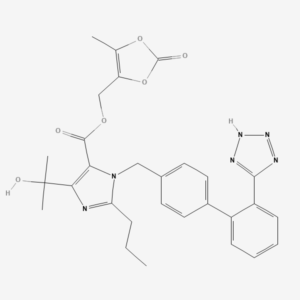Mental health, as a fundamental part of overall wellness, is receiving increasing attention in today’s society. Among mental health issues, psychotic disorders such as schizophrenia and bipolar disorder stand out due to their complexity and profound impact on individuals’ lives. Olanzapine, an atypical antipsychotic medication, has emerged as a critical tool in the management of these disorders. This comprehensive guide will provide a detailed overview of Olanzapine, discussing its mechanism of action, therapeutic uses, potential side effects, and the precautions required for its optimal use.
INTRODUCTION TO OLANZAPINE
Olanzapine, an atypical antipsychotic, is primarily prescribed to manage psychotic disorders such as schizophrenia and bipolar disorder. Atypical antipsychotics like Olanzapine are so named because they differ from the older, ‘typical’ antipsychotics in their side effect profiles and their effect on various neurotransmitter systems. Available in oral and injectable forms, Olanzapine caters to a broad spectrum of treatment requirements and patient preferences.
OLANZAPINE’S MECHANISM OF ACTION
While the exact mechanism of action for Olanzapine is not completely understood, it is thought to work by blocking receptors in the brain, specifically those linked with neurotransmitters called dopamine and serotonin. This blocking action helps rebalance these neurotransmitters in the brain, reducing the symptoms associated with psychotic disorders.
THERAPEUTIC USES OF OLANZAPINE
SCHIZOPHRENIA
Schizophrenia, a severe mental disorder affecting how a person thinks, feels, and behaves, is one of the primary conditions treated with Olanzapine. People living with schizophrenia often experience symptoms such as hallucinations, delusions, and disordered thoughts, which can greatly disrupt daily life. Olanzapine can help manage these symptoms, thereby improving the overall quality of life for individuals with this disorder.
BIPOLAR DISORDER
Another significant use of Olanzapine is in managing bipolar disorder. This mental health condition is characterised by periods of depressive lows and manic highs, which can be disruptive and distressing for those experiencing them. Olanzapine can help manage the manic or mixed episodes, and in some cases, it is used as maintenance therapy to prevent recurrence of these episodes.
TREATMENT-RESISTANT DEPRESSION
In addition to the above, Olanzapine can be used in combination with other medications to treat certain types of depression that have not responded to initial treatment options. This is known as treatment-resistant depression.
POTENTIAL SIDE EFFECTS AND RISKS OF OLANZAPINE
Like all medications, Olanzapine can cause side effects. The side effects experienced can vary among individuals and often depend on the dose and duration of treatment.
COMMON SIDE EFFECTS
Common side effects associated with Olanzapine include weight gain, drowsiness, constipation, and dry mouth. Most of these side effects are mild and often subside as the body adjusts to the medication. However, persistent or distressing side effects should be reported to a healthcare provider.
SERIOUS SIDE EFFECTS
More serious side effects, though less common, may include significant weight gain, changes in blood sugar and lipid levels, movement disorders, and in rare cases, neuroleptic malignant syndrome (a severe reaction to antipsychotic drugs). Olanzapine has also been associated with an increased risk of mortality in elderly patients with dementia-related psychosis. It’s crucial to seek immediate medical attention if any of these serious side effects occur.
PRECAUTIONS WHEN USING OLANZAPINE
Before starting Olanzapine, several precautions need to be considered:
1. Medical History: Provide a complete medical history to your healthcare provider, particularly if you have a history of heart disease, diabetes, liver disease, seizures, or any other significant health conditions.
2. Allergies: Be sure to inform your doctor if you have ever had an allergic reaction to Olanzapine or any other medication.
3. Pregnancy and Breastfeeding: Olanzapine should be used during pregnancy only if clearly needed, as it may pose potential risks to the fetus. Also, breastfeeding while taking Olanzapine should only be done after discussing the potential risks and benefits with your healthcare provider.
4. Alcohol and Drug Interactions: Alcohol can enhance the sedative effects of Olanzapine, and other drugs can interact with Olanzapine, potentially affecting its effectiveness and increasing the risk of side effects. Always inform your healthcare provider of all the substances you are consuming, including prescription drugs, over-the-counter medications, and dietary supplements.
Concluding Thoughts: Olanzapine’s Role in Managing Psychotic Disorders
Olanzapine has undoubtedly established itself as a vital component in the management of psychotic disorders. By effectively controlling symptoms, it can significantly improve the quality of life for individuals living with these conditions.
However, it’s essential to approach Olanzapine’s use with a comprehensive understanding of its potential risks and benefits. Always consult a healthcare provider to ensure that Olanzapine is the right choice for you or your loved one. With their guidance, careful monitoring, and adherence to prescribed doses, Olanzapine can be a crucial part of managing and mitigating the impacts of psychotic disorders. Always remember, mental health is as crucial as physical health, and there’s no shame in seeking help.




